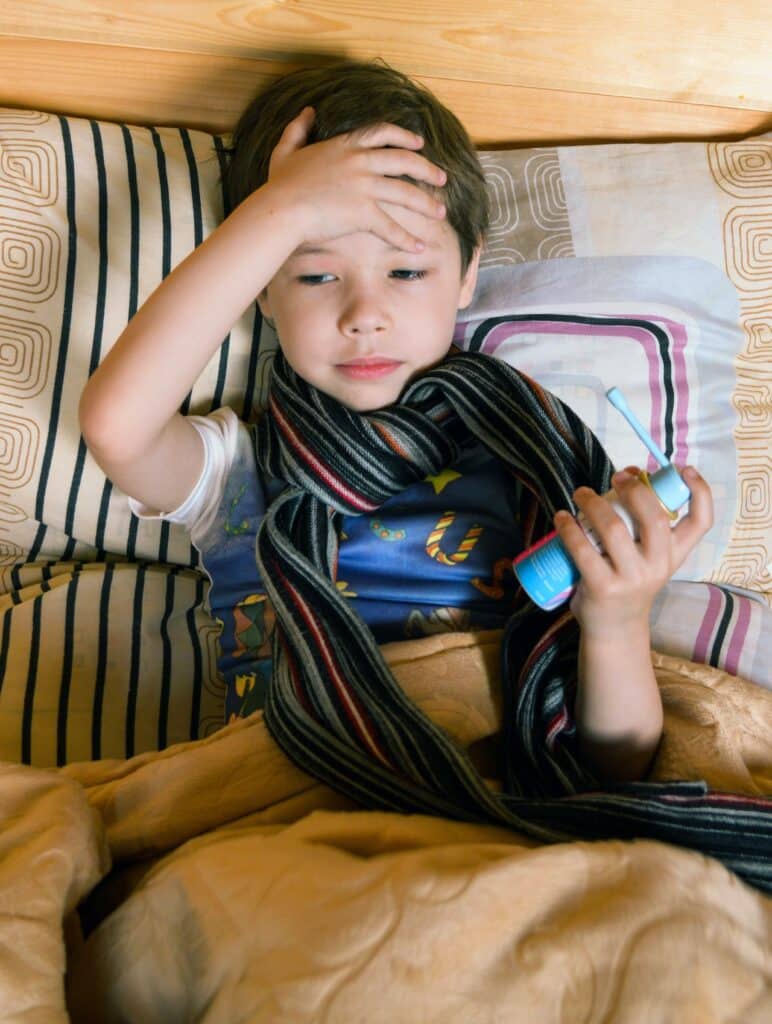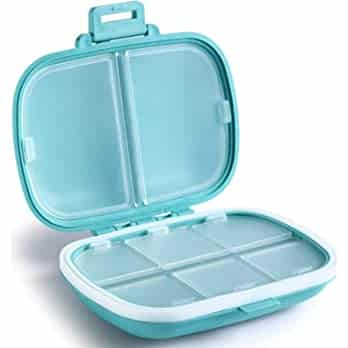It was somewhere on our way home, between St. Thomas and Dulles International Airport, when I had my last “uh-oh” parenting moment. We were hitting unexpected turbulence, and my youngest, who can ride every carnival ride and roller coaster ever built, who never once has been sea sick or car sick, turned to me and said, “I don’t feel good, Mommy.” I needed a travel emergency kit, and I didn’t have one.
Things happen when we’re traveling with kids. Long gone are my days of diaper bags, wipes, teething toys, creams, and extra clothes, and the general arsenal we used to assemble whenever we had to bring our babies anywhere, but as I found out, danger still lurks in unexpected places.
Table of Contents

What You Need To Know About Creating A Travel Emergency Kit For Kids
Thinking back on my experience, I should have been prepared. One of the first things I did when we were home was to build a travel-friendly emergency kit for future trips. Unlike our home medicine cabinets, we must build emergency travel kits differently.
While there have been rumors of the TSA relaxing their no-liquids above 3 oz policy, as of today, that’s still their guidance. Many of my family’s go-to solutions don’t come in smaller, travel-friendly sizes, though there are alternatives.
The 4 Must-Have TSA-Friendly Travel Emergency Medications For Kids
- Children’s Motrin or Tylenol – come in chewable tablet forms, so as long as your baby is old enough for solid foods, you should be ok. As always, your pediatrician can help you determine the correct dosage for your child based on their age and weight.
- Children’s Benadryl – also has a chewable tablet for children older than 2. If your child is between 2-5, you’ll need to consult your pediatrician on when it’s ok to use and what should be used.
- DiaResQ – an anti-diarrhea medication, comes in single-dose packets and is suitable for children ages 12 months and older. For children under 12 months, I recommend packing a pouch of pureed pumpkin, which can soothe the stomach and stop diarrhea with the extra fiber.
- Lil’ Giggles travel sickness medicated lollipops – are now my go-to motion sickness medication for my kids. These lollipops only require a few sucks or licks to knock nausea out cold, and my kids didn’t complain about the taste.
These four medications should address roughly 90% of emergency illnesses that pop up during your travels, as they handle approximately 90% of emergency illnesses that crop up with our kids at home.
How To Pack Your Travel Emergency Kit
Another issue unique to traveling with kids is the amount of carry-on space available. Packing your emergency travel kit in checked luggage isn’t good if something arises mid-flight, but no one wants to walk around with 17 boxes of medications in their bag.
You want to consolidate into a reasonable container size and keep the dosing information on hand. When I built my family’s travel emergency kit, I made it with this cool little pill organizer I found on Amazon.

To keep it safe and organized, I used Johnson and Johnson’s small medical tape to create labels for each section; I went horizontally so the top and bottom areas included the same medications. I then taped the dosage instructions inside those sections so they wouldn’t get lost.
I had some extra room, so I put a couple of bandaids of various sizes on the larger side, and I could fold a small trash bag (for soiled clothes) into the center before snapping it shut. It was a perfect size, and it fits easily in my purse.
What To Pack In Case Of Emergency In Each Child’s Carry-On Luggage
If you’ve been reading my blog for a while, you’ll know I’m a big fan of kids carrying their carry-on bags. It allows them to bring and manage their entertainment, reducing the amount I’m lugging around.
I recommend packing the following items in their carry-on bags, no matter how old your children are. You never know when you might need them.
- A fresh shirt and pair of pants – While we often remember to pack an extra change of clothes for our kiddos that haven’t finished potty training, those big kids have accidents too. They might spill their in-flight beverage or hit turbulence in the airplane’s bathroom; whatever it is, it pays to have an extra set of clothes.
- A microfiber face cloth – I also recommend a microfiber face cloth. These remarkably absorbent cloths will be more helpful in a spill or illness mishap than airplane napkins. These small but mighty cloth squares fold nicely and easily fit in a backpack pocket.
- A pair of child-sized earplugs and a sleeping mask – My littlest struggles with the pressure changes of landing, and no amount of gum, popping, or yawning help, but earplugs do. The facemask also comes in handy when one of my children gets a headache and needs to shut out the light for a while.
I can confidently say that since we built our travel emergency kit, there has been no situation I couldn’t handle for my kids on the spot, a far cry from where we began in this post.
Better still, my children have used each of these items at one time or another in our more recent travels, preventing a few minor mishaps from turning into big disasters.
What do you think? Are any of these in your family’s emergency travel kit?
